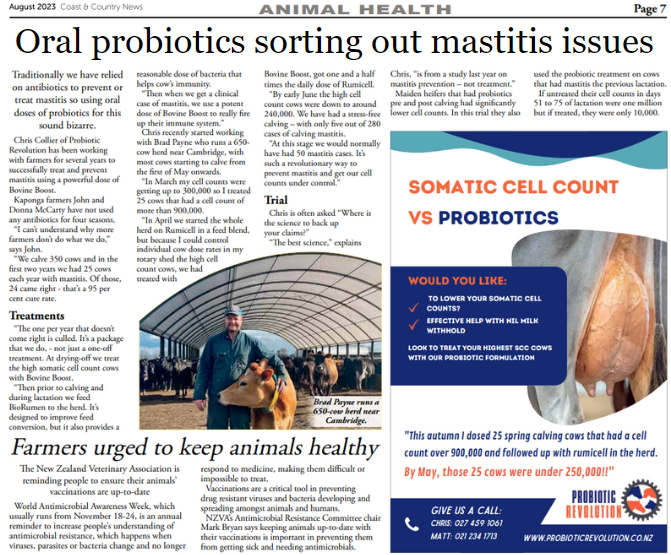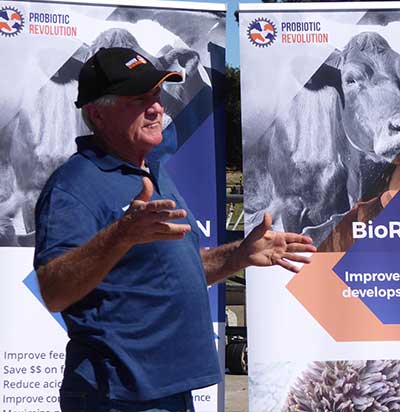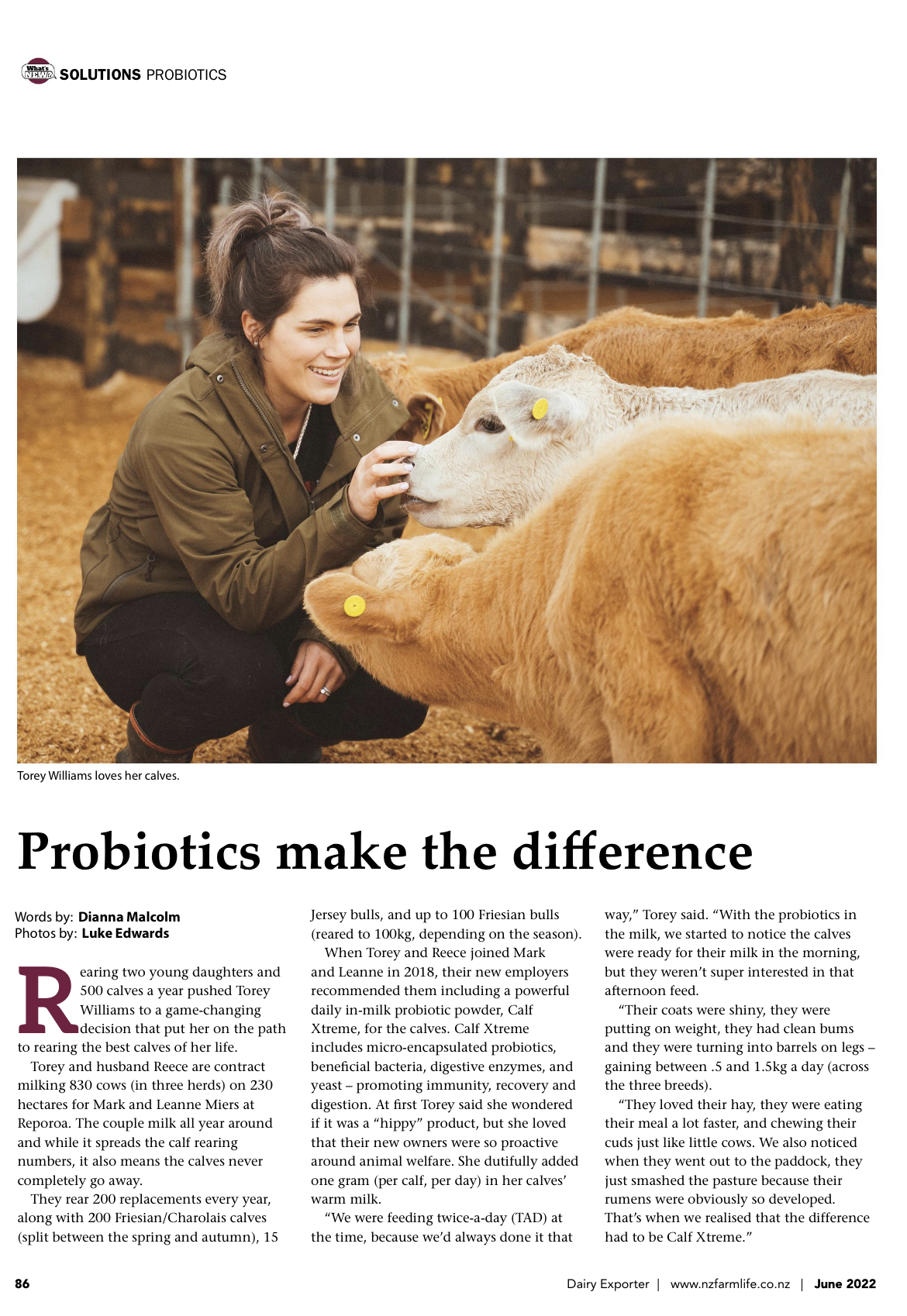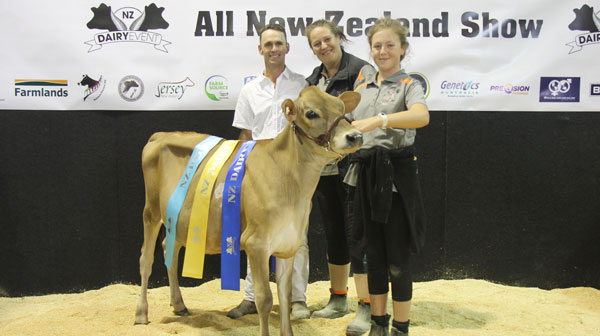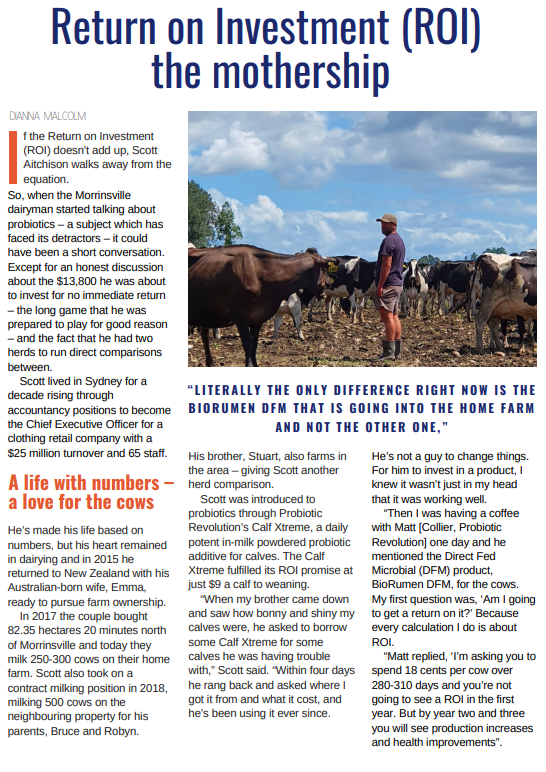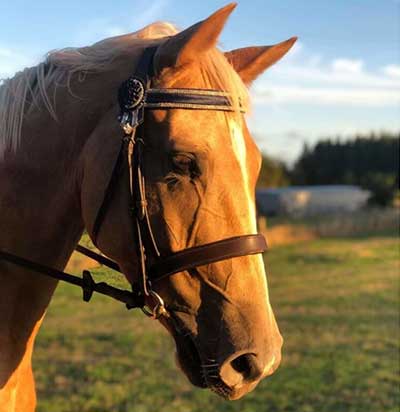Farmer testimonials
At the end of 2022 we surveyed our farmers and found some interesting results:
- When asked about customer satisfaction with Calf Xtreme, our farmers gave us an average rating of 9.5 out of 10!!
- After using Calf Xtreme, calves reached their target weaning weight an average of more than 10 days earlier than without, with some reaching up to 3 weeks earlier.
- 69% of Calf rearers saved on milk and meal in getting their calves to weaning!
“I was a bit dubious early on as my calves weren’t looking the best at all in Sep and Oct but I carried on with probiotics without high expectations to be honest. I ended up using 1T less meal and sent them grazing in last week of Nov at 122kg Ave. Normally I would still have mob of around 20 at home till mid Dec. So I’d say I’ll be using the product again next season. Cheers Mary”
“My calves have to be the best I’ve reared in my whole career! Even being hit with crypto they seemed to bounce back way faster than i anticipated. I love the fact its not just a product but the after sales and initial sales made me feel i had extra support and help at anytime. I stuck to my twice a day feeding regime and the amount of milk those calves drank with no scours was amazing! Something i never achieved with any other probiotic. The Belgian blues I sold at the sale were all over 135kg, the stock agent couldn’t believe how amazing they looked and for their age. I’m a firm believer in this product and I will have many farming friends joining the calf extreme probiotic family next season…as all my testimonials and videos have shown them what I’ve achieved this season with only changing one thing…the probiotic!”
Coast and Country August 2023
See how Brad has started using oral probiotics to help sort out the mastitis in his herd
Colony forming units is the ‘ trick question’ with probiotics
Three questions separate the pretenders from “the real deal” in probiotic efficacy, says the Australian-born grandfather of the live micro-organism debate…
Dairy Exporter, Jun 2022
Published in the Dairy Exporter in Jun 2022. Read about Torey’s journey to OAD feeding calves.
The fight of her life
Watching their six-month-old Jersey calf fighting for her life was a soul-destroying lead-up to the New Zealand Dairy Event (NZDE) for Hamilton breeders Stephen and Annabelle Scherer…
Looking at ROI in an on farm environment
Scott Aitchison looks at his observations between his one farm using BioRumen DFM and the other farm not using it.
New High-strength probiotic for kiwi equine industry
Dr Robyn Plunket talks about the power of high strength probiotics found in Healthy Horse
Stories and case studies
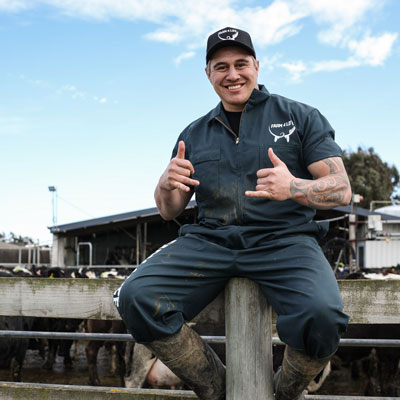
Tangaroa Walker
“Probiotic Revolution has literally transformed the way we feed our calves,”
Tangaroa – the 2012 inaugural winner of the Ahuwhenua Young Māori Farmer Award – has gone to establish a career which includes his contract milking position on a 180-hectare, 530-cow dairy farm in Mabel Bush, on the outskirts of Invercargill.
Larger than life
But, that is the tip of the ice-berg of this larger than life dairyman.
Tangaroa has also established Farm 4 Life, a social media page, which has 180,000 followers. And, he’s since leveraged that Facebook presence to promote a “Farm 4 Life HUB”, which is an online video learning platform delivering farming education 24/7. Its major sponsor is Farm Source.
His personal journey has led to the recent release of his autobiography.
Farming the foundation
However, his foundation remains the farm, and the exceptional team behind him at the Invercargill dairy. In the spring of 2020 he decided to introduce probiotics to their calf-rearing regime, which included 135 replacement heifer calves, and 30 bull calves.
They had had struggled with some health challenges the season before because of Cryptosporidium [scouring as a result of a parasite usually in calves under six weeks old].
“I’m really interested in gut health in humans,” Tangaroa said. “I know that a cow’s stomach pH is very important, and I I thought there must be heaps of room to move in the calf-rearing space with regard to treating scours, and potential growth using probiotics.
“Honestly, what did we have to lose? We’d had scours in our calves quite often the season before, and I wanted to change that.”
Once-a-day feeding
Probiotic Revolution’s Matt Collier recommended changing from twice-a-day to once-a-day feeding, and adding 1gm (per calf, per day) of Calf Xtreme in the milk.
Calf Xtreme includes unprecedented levels of micro-encapsulated probiotics, beneficial bacteria, digestive enzymes, and yeasts. It promotes immunity, recovery and improves digestion.
“We had seen the results of international studies where farmers were feeding their calves high rates of milk early on, which was proven to lay down the udder formation which was contributing to higher future production,” Matt said.
“We are able to safely achieve the same result in New Zealand using Calf Xtreme, because the live active yeast stabilises the rumen pH, while helping develop the rumen, along with that lactate-utilising bacteria (which includes 11 biological
compounds), in addition to the live active yeast.”
Tangaroa tests the change
Tangaroa decided to test one pen of the farm’s KiwiCross calves on the once-a-day feeding with Calf Xtreme. He immediately noticed a change.
“The calves on once-a-day just didn’t care that I turned up in the afternoon to feed the other calves,” Tangaroa said. “By the third afternoon, their body language told me that once-a-day was ok. So, from 12 days old pretty much all the calves were on
5.5 litres once-a-day.”
It was moved to 6.5 litres as they grew.
“What I also noticed over the next six weeks was the amount of additional condition they put on their back,” Tangaroa said. “They were in really good nick, and also none of them got the shits. Not a single heifer calf got sick with anything.”
Higher growth rates in shorter time-frames
He said they started “smashing” their meal and hay between four and six weeks of age, and by week six, 30% of the calves were content to either “take or leave” their milk.
“They were just happy, doing their thing,” Tangaroa said. “They were quiet, and their body language was great. We had no ‘flat’ calves.”
They had also concentrated on making sure all their calves had fresh meal and hay every day.
“We weaned our heifers at seven to eight weeks of age – which was two to four weeks earlier than normal – at the same weight as usual,” Tangaroa said.
“To be honest, it wasn’t until the heifers left the shed that we got hit with another bug, because we’d run out of Calf Xtreme.”
Why is immunity important?
He said the line of heifers was also more consistent, with much less “tail” than they usually experienced.
“We usually drench our calves when they go onto grass after weaning. We didn’t do that with these calves until they’d been out there for a month or so. And, they still looked really healthy. It wasn’t a problem.”
Matt said that the probiotics play a critical role in the development of a calf’s immune system. That’s because for the first two to three weeks of their life, calves have no immunity to disease or bacteria – save for the initial passive immunity transfer (PIT) of antibodies (IgG) they get from their dams’ colostrum.
By the time a calf is 12 hours old, that PIT number is as low as 20%. At 24 hours, the percentage has plummeted to just 5%. It is often described as a window of opportunity that is starts to slam shut as soon as the calf hits the ground.
“The lower gastrointestinal (GI) tract drives 70-80% of a mammal’s immunity, and the micro-encapsulated coating within Calf Xtreme allows the probiotics to be delivered to the rumen and come to life in the lower GI tract, where they can outcompete pathogenic bacteria and do their best work,” Matt Collier said.
“It works”
Will Tangaroa recommend Calf Xtreme to his colleagues?
“Absolutely.”
Will he use it again?
“Without question, and I’ll try to push my farm owners to allow us to use it for longer.”
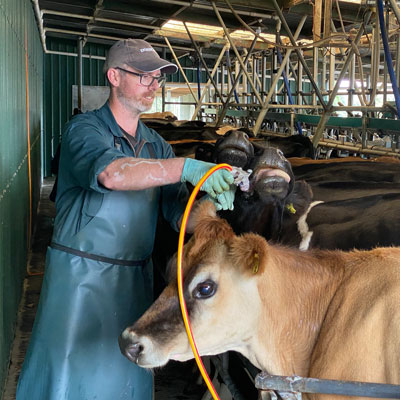
Shaun Eichstaedt
“Dairyman achieves break-through Dry Cow Therapy without antibiotics”
Taranaki sharemilker Shaun Eichstaedt was the first New Zealander to replace traditional antibiotic Dry Cow Therapy (DCT) with a high-strength probiotic.
Shaun milks 230 cows on 89 effective hectares in a 50/50 sharemilking contract. All the young stock graze off the property after weaning from December 1. They return as rising R2s on May 31 two years later.
Shaun has a number of older cows in the herd, and he appreciates that age and multiple lactations makes those herd matriarchs more vulnerable to mastitis, and high SCCs. It makes his dry-off strategy a critical part of his management decisions.
“A couple of years ago, we started looking for a fresh approach to drying off,” Shaun said. “We had been noticing that quite a few of the older cows in our herd – aged between nine and 12 years old – had higher SCCs, even though they had been treated with antibiotic DCT most of their life.
“And, some of those cows were still coming in with mastitis at the start of the next season. We realised that the antibiotic DCT wasn’t doing it for them, so we decided to try something different.”
Probiotic drench lowers SCC
In 2019, he drenched 31 cows, who had a SCC of 150,000 or higher for five days before dry-off with probiotic ImmunoMax. It includes a powerful blend of five strains of beneficial bacteria, five digestive enzymes, and a specialised strain of live active yeast. At 190 billion colony forming units (CFU) per dose, its unprecedented strength is causing a widening ripple-effect in DCT conversations throughout New Zealand.
That year the average SCC in that sub-group just before dry-off in the autumn was 556,000. On the first herd test the following spring, it dropped by 46%.
In 2020, the autumn average SCC on Shaun’s high SCC cows, before they were treated at drying off with probiotics was 678,000. That number dropped by 40% on the first spring herd test.
Strengthened immune function
While the response wasn’t immediately as high as it had been with DCT (67%), there were longer-term advantages which Shaun believes has been potentially game-changing to his herd’s udder health, and natural immune function.
“We only had a couple of cows that ended up with a bit of winter mastitis, and they hadn’t been treated with ImmunoMax,” Shaun said.
“I also found drenching the cows easier than using DCT, because I didn’t have those two hours of extra work involved with the antibiotic DCT on the day of dry-off.”
He says while his herd’s 160,000 average SCC this season remains slightly high for his liking, he is managing a number of older cows.
“I did put one cow, who didn’t have clinical mastitis on the bucket for a couple of milkings – because I suspected her SCC might be high – just to see how she was impacting on the herd’s SCC. It dropped it by 35,000, so I know I need to address those few cows that are 10 or 11-year-old,” Shaun said.
Clinical mastitis cleared without antibiotics
What he has also noticed is that fewer cows treated with ImmunoMax have gone on to break down with clinical mastitis the next season. Of the ones that have, he has found an effective alternative treatment, which has also had a positive impact on some of his culling decisions.
He used some leftover ImmunoMax to drench the clinical mastitis cows for five days, rather than reaching for an antibiotic intermammary treatment.
“That’s all those cows were treated with,” Shaun said. “And, they all cleared up.”
It also meant there was no milk or meat withholding.
Antibiotics kill the “good” and the “bad” bugs
Probiotic Revolution’s Chris Collier wasn’t surprised.
“We think when you use a long-acting antibiotic at dry off, you are sterilising the udder, which means you’re killing off the good – and the bad – bugs,” Chris said.
“Because of that, I think an antibiotic DCT would initially show a significant drop in SCC, because there is no infection to fight. But, when those cows have been challenged by mastitis the following season, they don’t have the good bugs in their udder to resist it.
“But, if their immune system is strong, and there is mastitis-inhibiting bacteria in the udder, it has been proven that the cow is in a stronger position to resist the clinical signs of mastitis. Antibiotics were never intended to be used as a preventative treatment.”
Shaun is now considering his options to feed a high-strength probiotic lead feed to his springers, and an in-feed Direct Fed Microbial to complete the probiotic picture for his herd.
He said the lower workload, results, and nil milk and/or meat withhold at calving have won him over.
“The cost was pretty similar, but (for me) the probiotics involved significantly less effort, which was a bonus. I’m happy. I feel that ImmunoMax has done the same job as DCT, and I’d rather not use the antibiotics.”
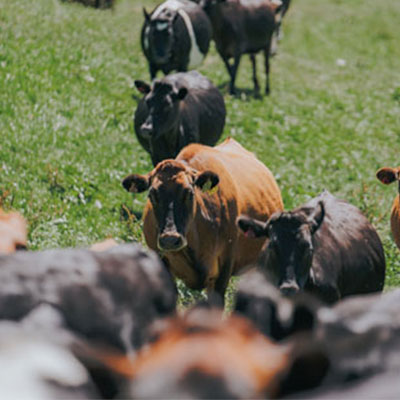
John Mccarty
“Honestly, by the time they had all calved you wouldn’t have known how sick they had been”
John and Donna McCarty no longer use intermammary antibiotics for mastitis or dry cow treatment, which has saved them money and improved herd health. The couple farm 142 hectares (350 acres) at Riverlea near Kaponga, in South Taranaki (near Mt Egmont) milking 320-head through a 44-bale rotary. They are progressing towards a F8/J8 herd with a production average of 500-550kg Milk Solids (MS) per cow.
Their production is sitting at 1250Kg MS per ha, and they recently recorded their highest production on-farm at 159,970Kg MS. Their average BMCC [Bulk Milk Cell Count] runs at 120,000. Their local vet practice acknowledges all of its clients’ level of antibiotic use on-farm with a ranking between one and 10 – with 10 being the highest. The area average is seven. McCarty’s is 1.5 – one of the lowest within this practice.
Continue reading the article by clicking the button below:
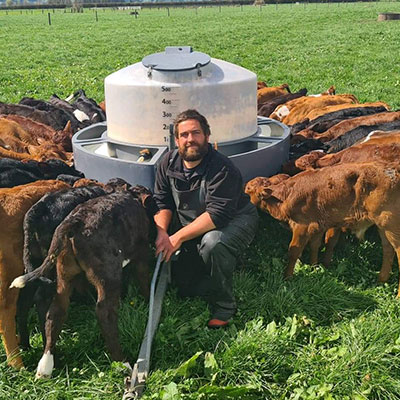
Cole Townsend
“It’s everything really. I even feed Calf Xtreme to the bobby calves, because that way I just don’t have sick calves.”
Waikato farmer Cole Townsend is so confident in the high-strength probiotics he is using, he has stopped vaccinating his cows against rotavirus.
Townsend and wife Josephine sharemilk about 200 cows on 60 hectares at Wardville near Matamata. Townsend is big on tracking numbers and has the perfect herd size to note how his decisions impact on his cow and calf health.
They are getting a return on investment of $2400 for every $800 spent on the operation (calculated on a $6/kilogram of milksolids). But more than that, he says he has never been in such a “sweet spot” when it comes to being on top of animal health in an impactful and natural way. And while he is happy the numbers add up, he says there is a much bigger story in play here. He believes these probiotics have contributed to him recording his highest production through the drought, while making his day-to-day workload a revelation.

